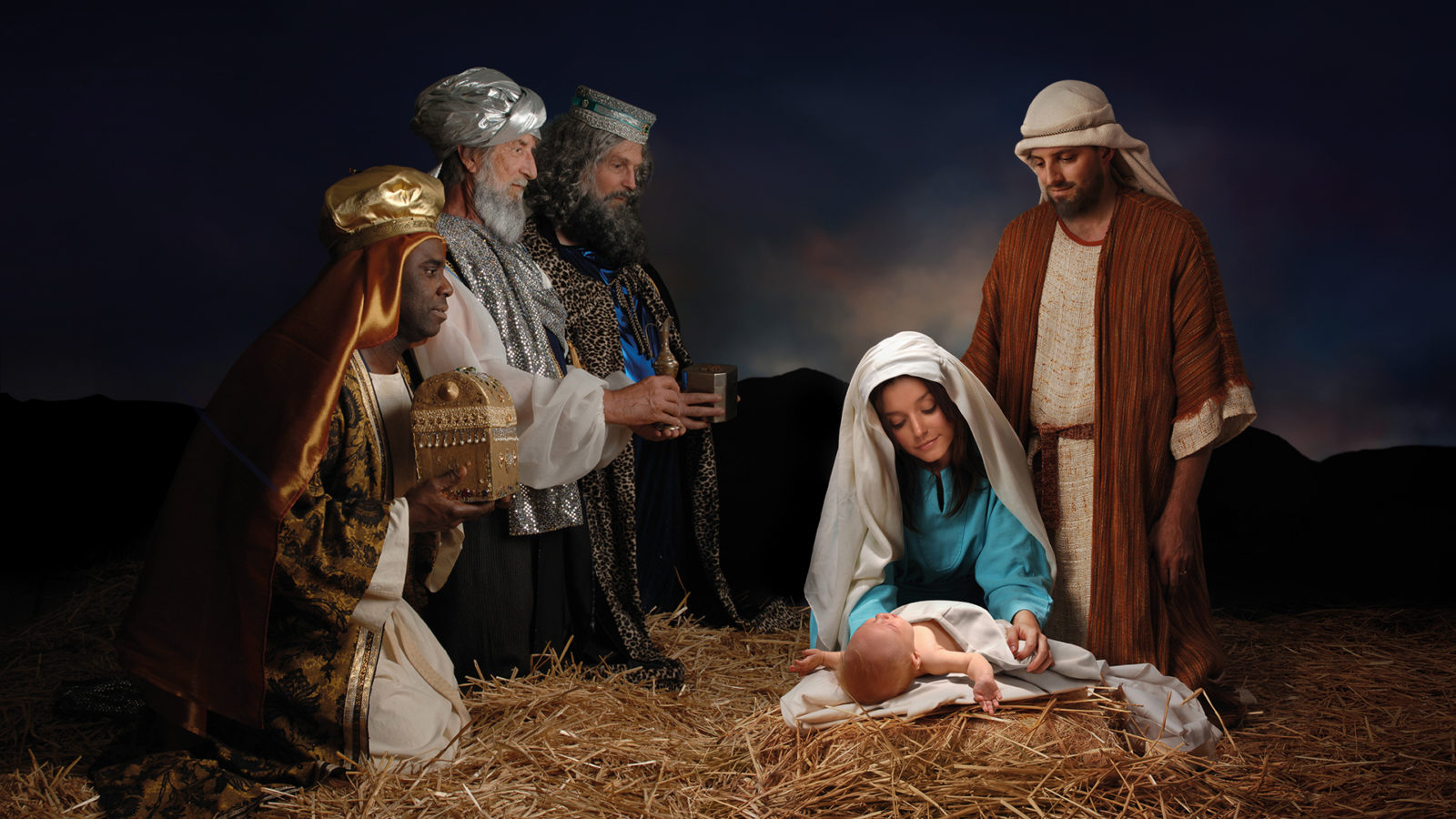Every year at Christmas we meet them again: three Wise Men, no less, no more. But what do we really know of them?
Who or What Are Magoi?
Matthew’s Greek calls them magoi (Matthew 2:1; plural of magos), which Bible translations render as “wise men” or “magi”. When the word appears again in the New Testament, most translate it “sorcerer” or “magician” (Acts 13:6-8). The contrast between Matthew’s seekers for Jesus and Bar-Jesus the false prophet in the Cyprian town of Paphos, “full of all kinds of deceit and trickery” (verse 10), could hardly be more startling. The contrasting meanings of magos both appear in classical Greek literature. Bar-Jesus and Matthew’s magoi are valid examples of each one. The magoi are the polar opposite to the Cyprian fake minister Bar-Jesus, “child of the devil and an enemy of everything that is right” (verse 10). They are more awake to the biblical scrolls than the [half-] Jewish king Herod and his Torah experts. Because they are open to His voice, God uses them to save His Son from the vile and murderous monarch Herod.
Matthew does not use the term, but we call them “three kings of Orient”. Where does the royal epithet originate? Third century Christian writer Tertullian (died c. AD 240) notes that people from the East regarded the Wise Men “almost” as kings (Adversus Marcionem, 3. 13. 8),1 while two Eastern non-canonical works from the sixth century AD, the Cave of Treasures (Fol. 40b. Col. 2) and the Armenian Gospel of the Infancy (5. 10) show that the bridge has been crossed from almost royal to established as such. Western Christianity (the Roman church) did not move quite as fast. Caesarius, bishop of Arles (died A.D. 542), preached a sermon openly assuming the Wise Men’s royalty (Sermon139). But not until the tenth century did artistic representations begin to show crowns on their heads.2
There is a suggestion that Isaiah and the ancient psalmist may have contributed in this regard: the psalmist’s description of kings coming from Eastern regions, and the prophet Isaiah’s reference to Eastern rulers bearing gold and frankincense combine to serve as biblical support for the developing tradition. For the psalmist, the kings bring presents to the king’s son (Psalms 72:1, 10, 11); for Isaiah their riches are gifts presented when God’s glory appears upon His people (Isaiah 60:3, 6).
The interpretations of royalty, though invoking biblical texts, are not necessarily biblically validated. Matthew 2:11 is not confirmed as a fulfilment of a prophecy in Isaiah 60:6 simply because both these verses mention gold and frankincense. A key element in determining such prophetic fulfilment is how the New Testament author uses the Old Testament material.
Matthew, who quotes from the Old Testament abundantly, has nothing to say about any biblical passage applied to the Wise Men. This is particularly instructive because so many of his Old Testament quotations focus on the Nativity story. Matthew is explicit: Jesus’ birth announcement (Matthew 1:22, 23) is a fulfilment of Isaiah’s prediction of a virgin conceiving (Isaiah 7:14). Joseph’s coming up out of Egypt after God sent him there to preserve the Baby Jesus’ life (Matthew 2:13-15) is a fulfilment of Hosea’s prediction that God would call His son from Egypt (Hosea 11:1). Rachel’s disconsolate weeping for her children (Jeremiah. 31:15) is fulfilled in the wailing of Jewish mothers after Herod slaughters all infants and toddlers under 2 years old to make sure he gets rid of the Baby born King of the Jews (Matthew 2:17, 18).
Thus, Matthew’s silence concerning any predictive significance or prophetic realisation vis-à-vis Isaiah 60 or Psalm 72 is telling, and Psalm 72 and Isaiah 60 are reasonably dismissed as unwarranted importation of biblical information, in relation to the activity and royal identity of Matthew’s magoi.
If we accept Matthew’s regular acknowledgements of social status—centurion (Matthew 8:5; 27:54), soldier (Matthew 8:9; 27:27), priest (Matthew 21:15), scribe (Matthew 2:4; 8:19), Pharisee (Matthew 3:7; 12:2), governor (10:18; 27:2), king (2:1, 3, 9)—we should be willing to do the same with magoi (verses 1, 7, 16). As stated, the term signals educated people working as dream interpreters or state counsellors: these are wise men, not kings.
Three Men or Three Gifts
Early Christian theologian Origen (died AD 253) is the first known to state that the wise men were three (Holikies on Genesis and Exodus 14), though the range of their number spans from as few as two to as many as 12.3 Helped on by several sermons from Pope Leo I on the Wise Men (Sermons 31, 33, 34, 36), consensus on their number eventually conformed to the number of their gifts. As with status, Matthew did care about numbers—two demon possessed men (Matthew 8:28), 12 disciples (Matthew 10:1; 11:1), two blind men (Matthew 9:27), 4,000 males (Matthew 15:38). But he never found it necessary to state the number of Wise Men. Also, he knows about names—his chapter 1 genealogy is witness enough, including Mary, Joseph, and Emmanuel.
But he is not to be associated with any naming of Wise Men that tradition has thrown up: Hormizdadh, Izgarad, Perozadh, from a Syrian legend (Cave of Treasures, Fol. 40b. Col. 2); Tanisuram, Maliko, and Zesesba, an Ethiopic story (The Conception and Birth of our Lady Mary 17); Ator, Sator, and Petatoras;4 Enoch, Melchizedek, and Elijah, descended from heaven to visit the baby Jesus;5 Bithisarea, Melchior, and Gathaspa, from a fifth-century Greek work translated into Latin in the eighth century (Excerpta Latina Barbari, 51b, 25); or, ultimately, thanks to the sixth-century Armenian Gospel of the Infancy, the triumphant trio, Melchior, Gaspar, and Balthazar.
The Important Thing
Matthew was less concerned with names, numbers, and status. But one thing was essential. Principal and paramount was his story about Jesus and the salvation He brings. As the messenger from heaven instructs Joseph, Mary is not to be put away: “She will give birth to a son and you are to give him the name Jesus, because he will save his people from their sins” (Matthew 1:21). Names and numbers, status and race, have preoccupied the minds of people interested in the Jesus story. Between the fourteenth and fifteenth centuries a Black magos entered the story, perhaps because someone wanted to emphasise its universal significance. Ironically, he joined three men with White European features, a geographical conundrum that seriously challenges their biblical origins.
But distortions on appearance one way or another, whether gently racist or nobly globalist, were no minutest part of Matthew’s concerns. Bearded or clean-shaven, ancient or juvenile, White or Black, are not elements of his story. His apathy regarding these issues suggests a narrative goal not centred not in race or aesthetics, but in people’s transformation once they are privileged to engage with Jesus. Irrespective of race or age or stature or skin colour, the woman of Canaan (Matthew 15:22), the man of Cyrene (Matthew 27:32), and the magoi from the East all receive the blessing that matters because they get to be with Jesus, whom Matthew shows to be the hope of Israel and Messiah of the ages, the royal son of David who is the seed of father Abraham (Matthew 1:1).
The manner of their travel is no more consequential a matter for Matthew than the colour of their skin: they may have walked 28 to 37 kilometres per day; or, as in the greeting cards and the movies, they may have ridden camels covering as much as 150 kilometres per day. Their arrival date may or may not have been January 6, celebrated in so many Latin American households and many places elsewhere around the globe as the day kids receive their gifts, the día de los Reyes Magos (Day of the Magi Kings). We have no documentation of it. That date’s calculation depends on another mere tradition, the actual day of Jesus’ birth, December 25—for neither do we have any confirming documentation.
Because so much of the story of the magoi we call Magi remains undocumented, details that are included assume compelling power: we aren’t given their names, their number, nor their date of arrival. But we know where they came from—they were Gentiles from the East (Matthew 2:1); we know where they came to—to the place where the child was (verse 9); we know what they came for—they came to worship the King (verse 2). And that knowledge is both global and personal enough for me to process.
Do I know where I’m from? Do I know where I’m going? Am I in tune with the wisdom and dedication of those ancient Eastern sages? And am I on my way to worship the King?
Carlos Olivares is a professor of theology at an Adventist University in Brazil, South America. This story is reprinted from www.adventistreview.org. Accessed December 18, 2018.






